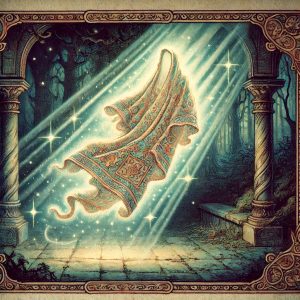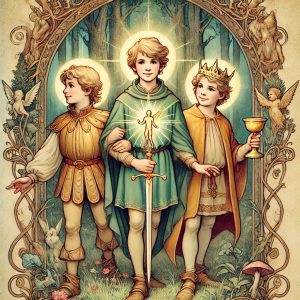
A Horse with a Special Talent
Once upon a time, in a small, cozy town called Kulmbach, there lived a horse named Hans. Now, Hans wasn’t just any horse. He had a special talent that made everyone talk. This horse, believe it or not, could solve math problems! Yes, you heard right. From adding and subtracting to the tricky stuff like multiplying and dividing, Hans could do it all.
The Curious Trainer
Enter Oskar Pfungst, a young man with a big curiosity and a love for puzzles. He’d heard tales of Hans’ incredible skill and thought to himself, “I’ve got to see this with my own eyes!” So, off Pfungst went, on a journey to Kulmbach, eager to meet this mathematical wonder horse.
The First Encounter
In Kulmbach, Pfungst met Hans and his trainer, a man named Wilhelm von Osten. Von Osten was more than happy to show off Hans’ math magic. And sure enough, Hans didn’t disappoint. He tapped his hoof, answering math problems as if he’d gone to school just like you and me. Pfungst watched, amazed, thinking, “Could this horse really understand numbers?”
The Hidden Cues
Pfungst watched Hans and his trainer with the eyes of an eagle. He spotted something nobody else seemed to notice. Hans, the so-called mathematical genius, appeared to be picking up on tiny signals from his trainer. A nod, almost invisible, or a foot’s subtle shift were all Hans needed to find his answers.
Intrigued, Pfungst leaned closer, squinting to catch every microexpression on the faces around him. Subtle cues were everywhere, it seemed. Hans’ ears flicked back and forth, tuning in to these silent signals like a radio finds its station.
The Experiment
Pfungst thought hard and came up with a plan. “Let’s see what happens if we change things up,” he mused. First, he asked von Osten to step outside, leaving Hans without his usual guide. To everyone’s astonishment, Hans still tapped out answers with his hoof.
Next, Pfungst invited different folks from the crowd to pose questions to Hans. Each time, the horse responded as if he truly understood. But Pfungst watched like a hawk, spotting those hidden cues no matter who stood before Hans. “Hmm,” Pfungst hummed to himself, “there’s something fishy going on here.”
The Revelation
After many observations, Pfungst had an aha moment. Hans wasn’t actually crunching numbers in his head. No, he was a master at reading the room. Whether it was a slight twitch of a moustache or the widening of eyes, Hans used these signs to guide his hoof taps.
Pfungst shared his findings, explaining that Hans was not solving math problems but was instead responding to the body language and facial expressions around him. This revelation didn’t disappoint but instead opened everyone’s eyes to the true talent of Hans: his incredible sensitivity and keen observation skills.
The Legacy of Clever Hans
Hans’ tale didn’t end with the revelation of his true talent. Instead, it sparked curiosity far and wide. People from all corners of the globe were fascinated by the story of the horse who seemed to do math. This curiosity wasn’t just about a horse’s ability to count or solve problems but also about how closely animals and humans can communicate without words.
This story, once believed to be about a mathematical genius of a horse, turned into a much bigger lesson. It showed us how attentive and sensitive animals can be to our non-verbal cues. Hans had been picking up on the slightest changes in posture, facial expression, or even the breath of those around him to find the right answers.
Though Hans wasn’t actually crunching numbers, his legacy lived on. He became a symbol of the unspoken bond between humans and animals, a bond that could lead to incredible feats. His story encouraged folks to look beyond what they believed was possible and to consider the profound connections we share with our animal friends.
The Impact on Psychology
The story of Clever Hans didn’t just capture the hearts and imaginations of the public; it also made waves in the scientific community. Psychologists and animal behaviorists were especially intrigued. What Hans had demonstrated was a clear example of the observer-expectancy effect, where a person’s expectations can influence another’s behavior without any direct communication.
This understanding was groundbreaking. It opened up new avenues for research into animal cognition and intelligence. Scientists began to investigate more deeply into how animals perceive their environment, how they learn, and how they communicate. The Clever Hans effect, as it came to be known, became a cautionary tale for researchers to design their experiments carefully to avoid influencing the outcomes unintentionally.
Moreover, Hans’ story encouraged scientists to explore the capabilities of other animals, leading to discoveries that challenged our assumptions about the natural world. It brought to light the intelligence and sensitivity of creatures big and small, prompting a shift in how we interact with and study animals.
The Enduring Mystery
Even years later, the tale of Clever Hans remains a captivating mystery. It continues to remind us of the wonders hidden in the world around us and the mysteries that lie in the minds of the creatures we share it with. Hans taught us to look closer, to observe the subtleties of communication, and to appreciate the intelligence that resides in all beings.
His story is a testament to the power of curiosity and observation, inspiring generations to question and discover. It’s a reminder that sometimes, the most extraordinary discoveries come from the most unexpected places. Hans may not have been the mathematical prodigy he was once thought to be, but his story has left an indelible mark on the fields of psychology, animal behavior, and beyond.
As night falls and stars twinkle in the sky, tales of Clever Hans continue to be told. They serve as a bridge between the past and present, between humans and animals, and between mystery and discovery. And so, the story of the clever horse weaves its way into the fabric of our collective imagination, forever capturing our wonder and awe.






